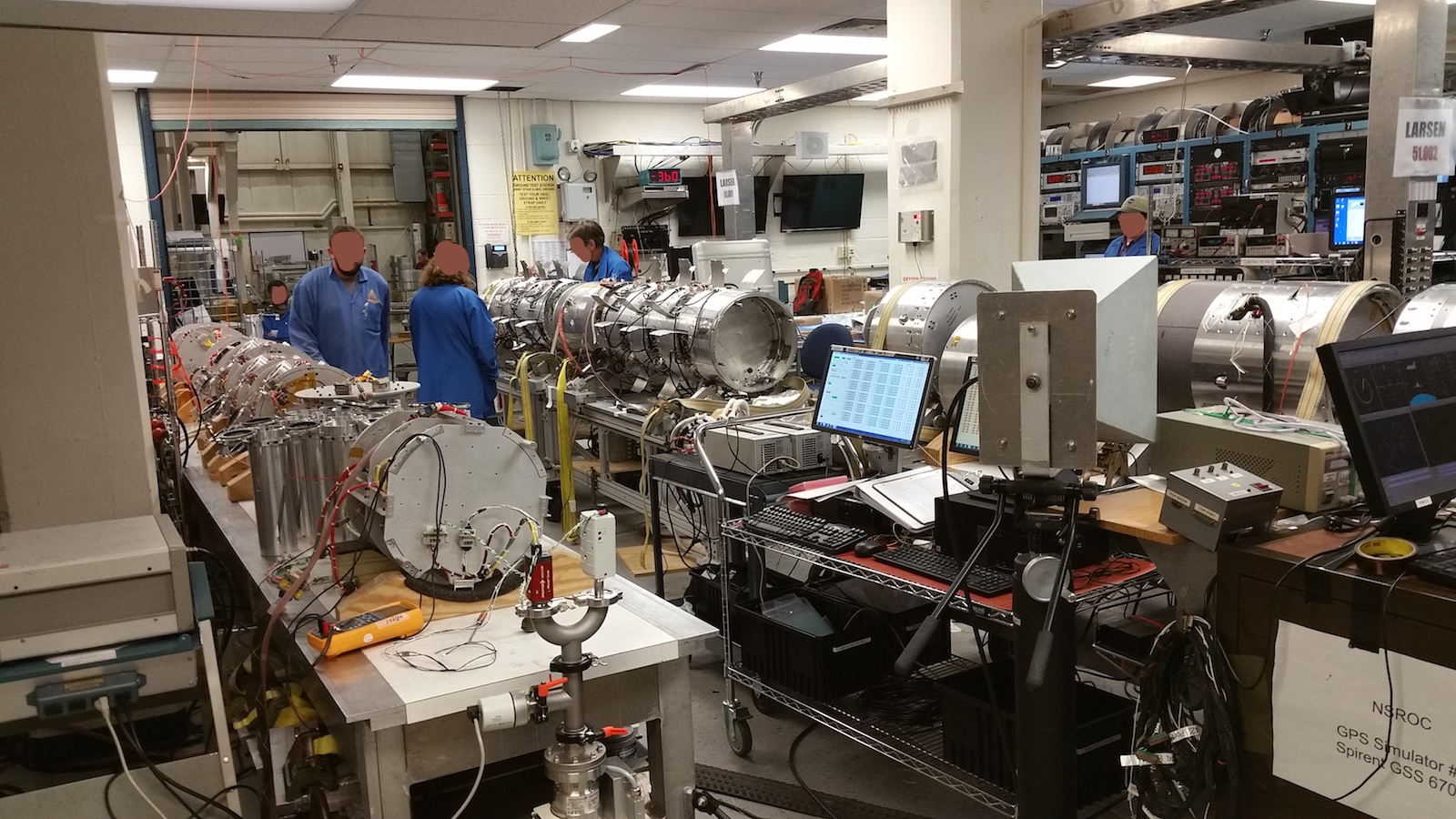On April 5, 2019, the NASA sounding rocket missions AZURE finally launched from Andøya Space Center in Norway. It was a most beautiful display of chemiluminescent tracers released between 100 and 300 km and dispersed by the thermospheric wind and electric fields (big image above). The name of the experiment AZURE stands for Auroral Zone Upwelling Release Experiment. The principal investigator is Dr. Miguel Larsen, also from our department. As co-investigator, I contributed two ionization gauges, a cold-cathode and a hot-cathode type gauge, that measured neutral densities and temperatures between 90 and 150 km on the descent of each parabolic suborbital flight. Preliminary results show distinctly different densities and temperatures between 110 and 130 km, where auroral heating is expected. The payload also included photometers built by the The Aerospace Corporation that observed auroral optical emissions.
A new paper (Lehmacher et al., 2020) used 12 years of high-resolution Jicamarca data to propose a new idea what causes the striking gaps in the 150-km echoes necklace. The data were collected in a collaborative effort with University of Illinois (Erhan Kudeki, Pablo Reyes) and the Jicamarca Radio Observatory. Theoretical calculations by William Longley (Rice University) confirmed these ideas and closely reproduced the observed gaps (Longley et al., 2020).
Several new sounding rocket experiments are in preparation, although the pandemic has caused major delays. The Vorticity Experiment (VortEx) will look at mesoscale dynamics between 90 and 120 km, where gravity wave amplitudes maximize and extreme winds and wind shears form. Radars, lidars, and imagers will support the launches, which are now scheduled for February 2023 from Andøya Space Center as part of the new Grand Challenge Initiative: Mesosphere Lower Thermosphere.
Before that, my colleague, Dr. Stephen Kaeppler will launch INCAA: An Investigation of Ion-Neutral Coupling During Active Auroral Conditions. I will contribute two ionization gauges to measure neutral densities and temperatures which will help determine collision frequencies and E region conductivities. The missions are to be launched in April 2022 from Poker Flat Research Range, Alaska.
The newest project is called AWESOME: Auroral Waves Excited by Substorm Onset Magnetic Events. PI is Dr. Mark Conde, University of Alaska Fairbanks. For this experiment, we plan to eject sets of four ionization gauges to obtain horizontally separated density profiles and look for thermospheric gravity waves.

Assembly of the AZURE payloads at NASA Wallops Flight Facility. Photo: G. Lehmacher.

Gaps in 150-km echoes (yellow, red, and cyan lines in row above) represent specific electron densities (or plasma frequencies, in row below) and they shift in altitude depending on local electron density. Left: Near solar minimum. Right: Near solar maximum. Lehmacher et al., 2020.